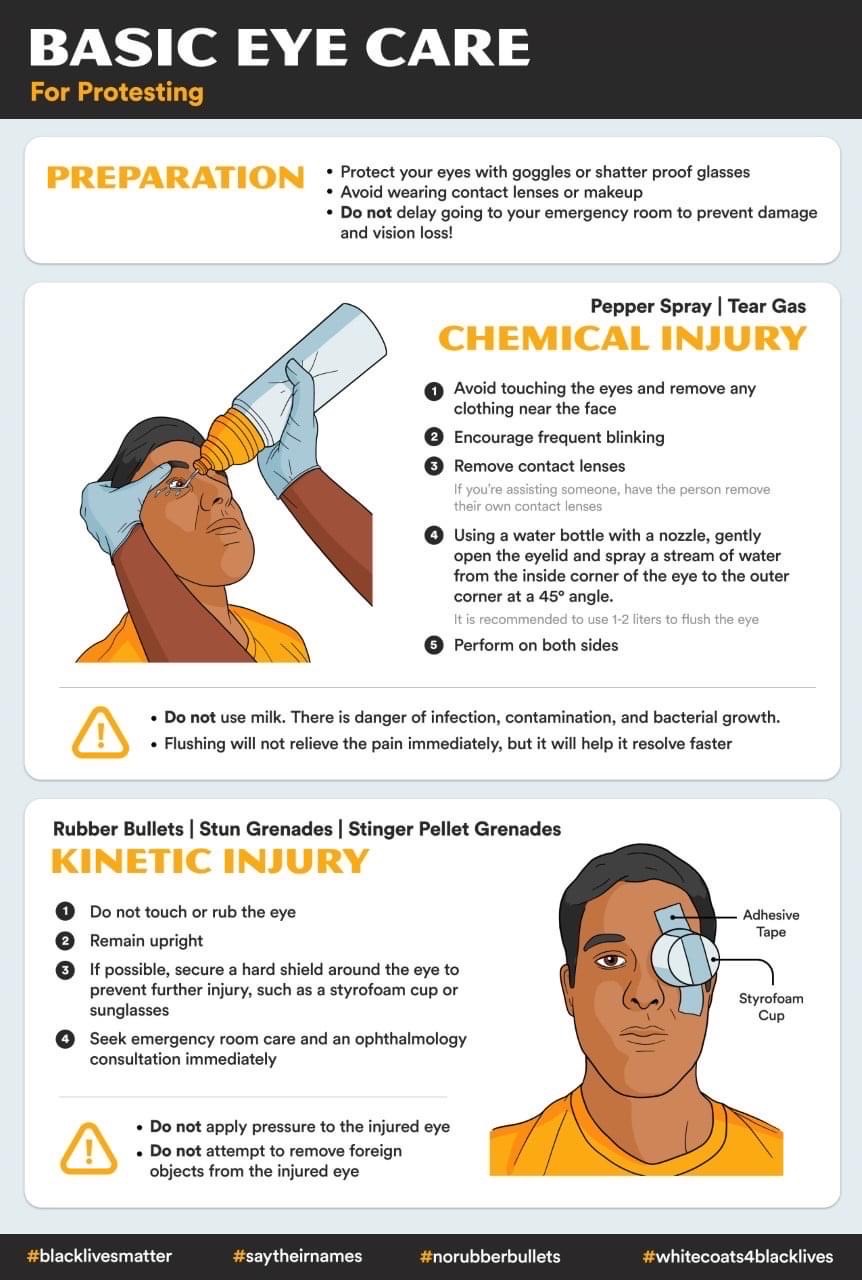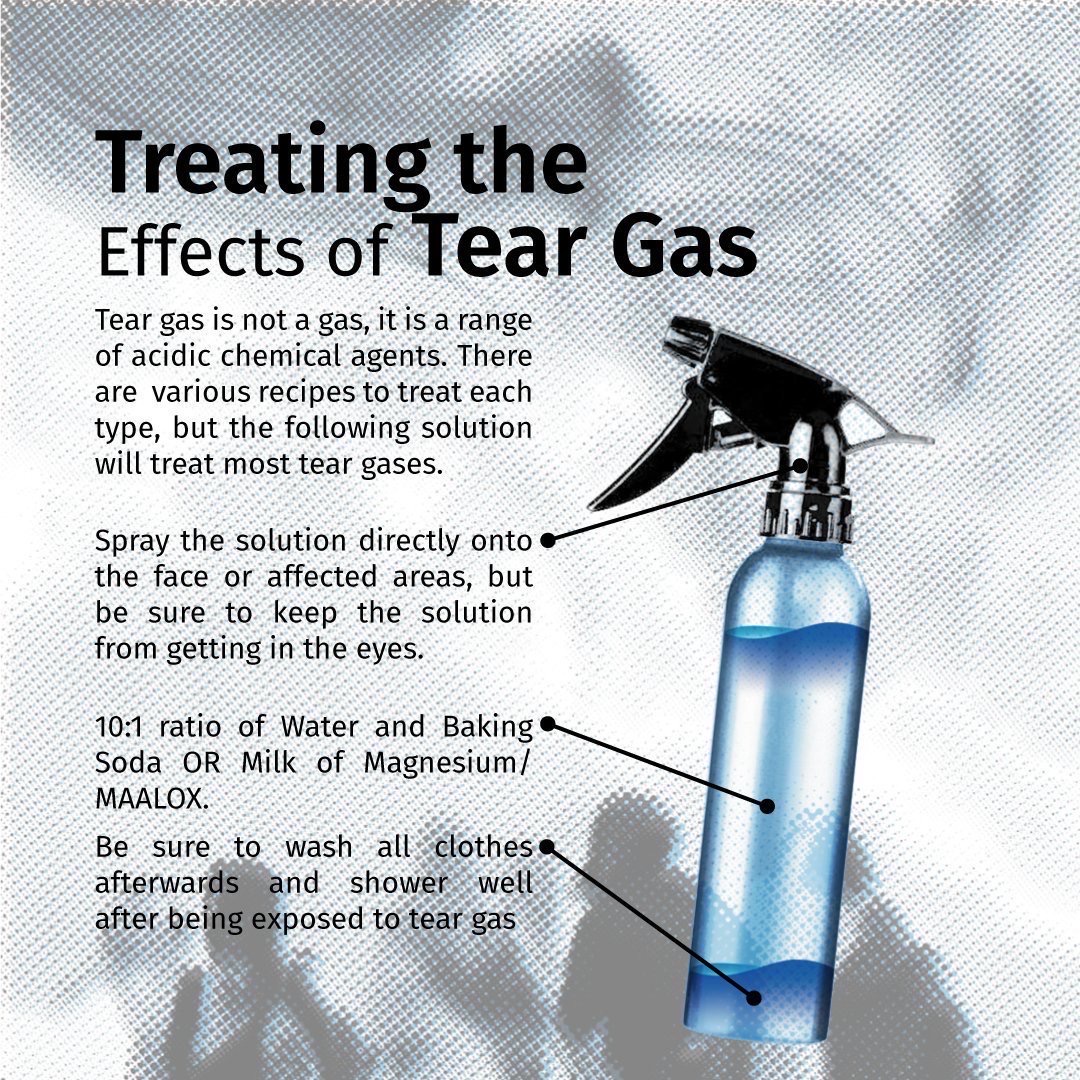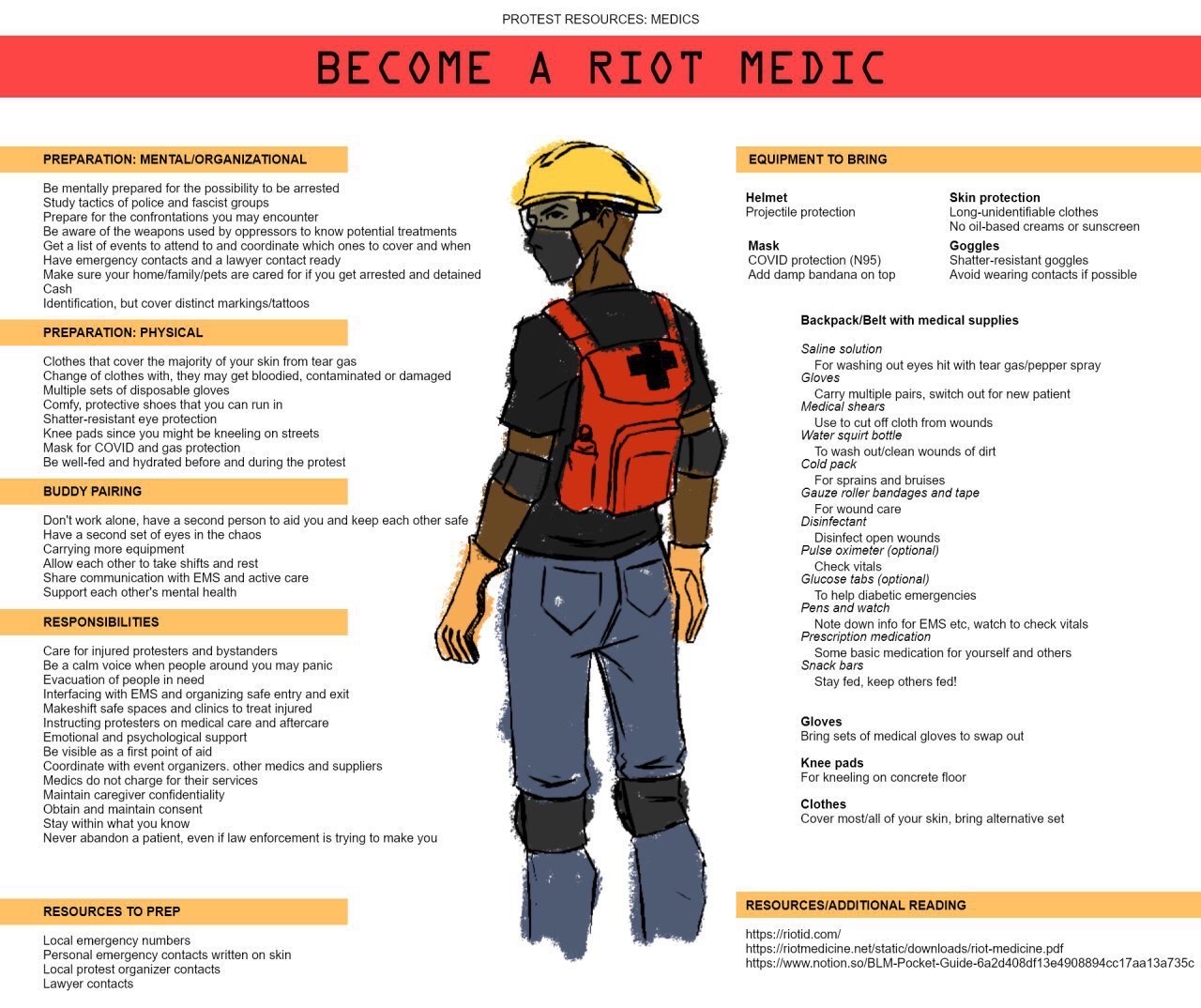Medical
No matter how peaceful you may be, police will use various Riot Control Agents (RCAs) against you and your comrades.
Medic Guides and Manuals:
- RiotMedicine.net: A free manual for practicing insurrectionary medicine.
- First Aid For The Streets
- Herbal First Aid Aftercare for All Who Have Experienced Police Violence
- The Herbalist Street Medic, from 7Song.com
Other Medic Resources:
Watch:
- A Marine’s Advice on Tear Gas Attacks, by VICE
- How To Treat Pepper Spray & Tear Gas, by Yerba Buena Center for the Arts
Note: as you can see in the videos above, there is competing advice and information on how to best treat exposure to chemical weapons. We want to provide all relevant information here so you can use your best judgment. While the former Marine in the VICE video advises against using any substances to treat tear gas, many people have found relief by using water to flush the chemicals out of their eyes and off their skin.
Basic Eye Care
Treating Tear Gas Exposure
Tear gas is a chemical that needs to be flushed from the eyes, and the only thing that really does that well without introducing additional risks is water. There have been studies on water vs. milk vs. baby shampoo vs. other household items and none have shown that anything is better than water. (Source)
Use water to flush out the eyes. Clean, plain, drinkable, cool water is best.
Do NOT use milk. While milk might provide some cooling relief to irritation, it does not do much to help. Studies have NOT shown milk to be more effective than water. Cold milk might feel good in the moment, but the most important thing to do if you get tear gas in your eyes is to flush them out with water. (Source)
What About Baking Soda? As for the baking soda recipe popularized by the Hong Kong protests, use cation. Using three teaspoons of baking soda mixed with 8 ounces of water does work, because it is able to neutralize the tear gas chemicals. However, baking soda is another irritant, and anytime you’re using an irritant, it could potentially scratch the surface of your eyes. (Source)
What is tear gas? Tear gas is a collection of chemicals that cause skin, respiratory, and eye irritation. It is usually deployed from canisters, grenades, or pressurized sprays. Despite the name, tear gas is not a gas. It is a pressurized powder that creates a mist when deployed. The most commonly used form of tear gas is 2-chlorobenzalmalononitrile (CS gas). It was first discovered by two American scientists in 1928 and the U.S. Army adopted it for controlling riots in 1959. (Source)
If treating exposure to the skin only, other non-water solutions may provide relief.
Treating Pepper Spray Exposure
Similar to tear gas (see above), the goal is to flush out the chemicals from the eyes.
Use water to flush out the eyes. Clean, plain, drinkable, cool water is best.
Do NOT use milk or other substances directly in the eyes.
For pepper spray on the skin: (Source)
- Cool soap and water. A 25-minute shower with cool water and soap — one that cuts through grease, such as dish soap will provide the best relief.
- Liquid antacid and water (LAW). If a shower or water for decontamination isn’t readily available, this tends to mitigate the pain of the pepper spray but doesn’t remove it as well as a good shower.
Laser Safety
Burn and Smoke Safety
Review the Burn & Smoke Safety guide, developed by About Face: Veterans Against The War. This provides information on general safety for anyone near fires or smoke during protests, burn first aid, and smoke inhalation first aid. (Source)
TL;DR:
The inhalation of smoke of any kind is inherently dangerous and should be avoided whenever possible, but certain materials are especially dangerous and more common than you may realize.
If you see the following materials burning, be aware that you may be subjected to higher levels of toxin exposure:
- Lithium ion batteries
- Plastics
- Rubber
- Wood laminate
- Lyft bikes
- Rental scooters
- Oxygen tanks or vehicles/facilities that contain them
- Fuel tanks including propane, gasoline, generators
- Electrical materials
- Construction materials
If you know that you are likely to be exposed to smoke of any kind, please wear the highest level of respiratory protection available to you.
Toxic fumes will also harm your eyes, please also bring the highest level of eye protection available to you.


